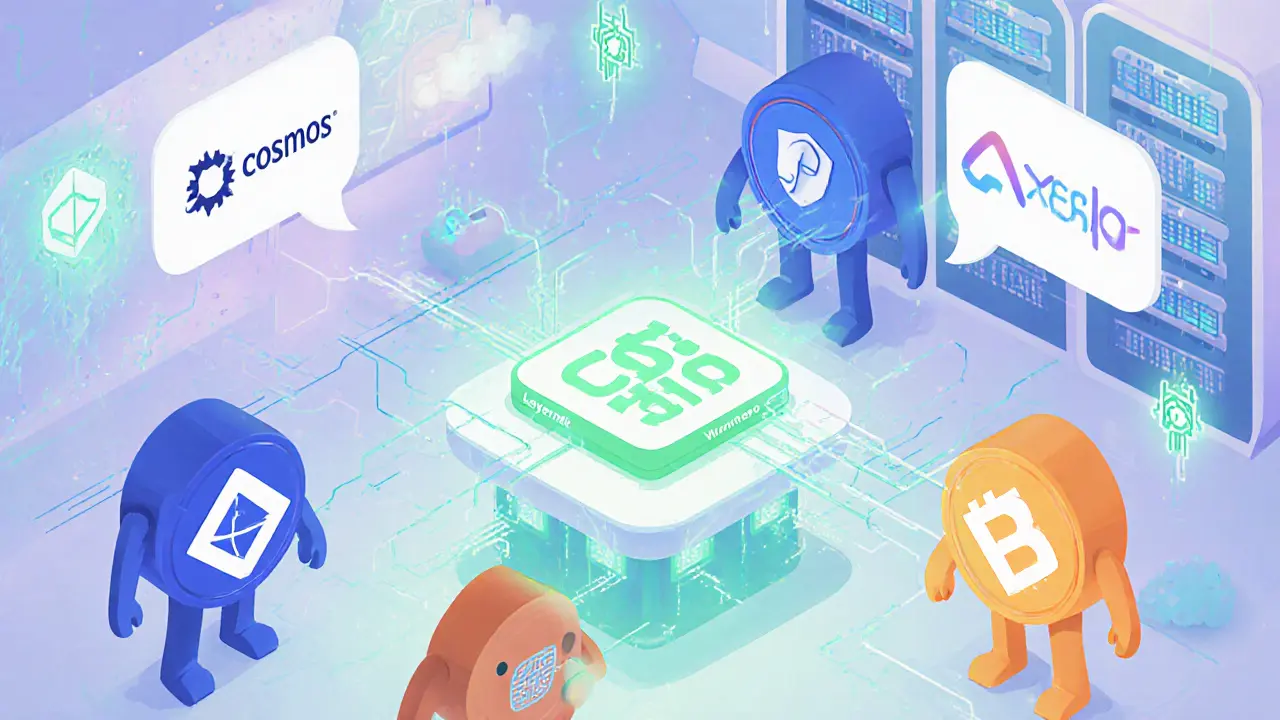When working with cross-chain integration, the process of linking separate blockchain networks so assets and data can move freely between them. Also known as blockchain interoperability, it lets developers build apps that aren't locked to a single chain. Blockchain bridges, specialized protocols that lock assets on one chain and mint equivalents on another are a core tool for making this happen.
Another key piece is interoperability protocols, standardized sets of rules that define how different ledgers talk to each other. These protocols enable smart contracts on one network to call functions on another, turning isolated chains into a unified ecosystem. Because of this, cross-chain integration can support more complex workflows without developers rebuilding the same logic for every blockchain.
One practical outcome of interoperability is cross-chain swaps, direct token exchanges that happen across different networks without a trusted middleman. Swaps rely on atomic transaction mechanisms, so either both sides complete or none do, protecting users from partial execution. This means traders can move liquidity from Ethereum to Polygon or Solana in seconds, cutting costs and improving market efficiency.
All of these building blocks feed straight into decentralized finance (DeFi), financial services built on blockchain that operate without traditional intermediaries. DeFi platforms use cross-chain integration to offer users broader asset choices, higher yields, and more resilient exposure to market moves. When a DeFi protocol can pull in liquidity from multiple chains, it becomes less dependent on any single network’s congestion or fees.
Semantic connections are easy to spot: cross-chain integration enables token transfers across networks; blockchain bridges facilitate these transfers; interoperability protocols power cross-chain swaps; and DeFi relies on all three to deliver seamless financial products. Understanding each piece helps you decide where to focus your development or investment efforts.
Users are tired of hopping between wallets and paying high gas fees on a single chain. By adopting cross-chain integration, projects can tap into the strengths of each network—Ethereum’s security, Solana’s speed, Polygon’s low fees—while avoiding their weaknesses. This multi‑chain strategy also spreads risk; if one chain experiences a outage, assets can still move through other routes.
Developers benefit from reusable components. A bridge built for ERC‑20 tokens can often be extended to support NFTs or custom assets with minimal changes. Interoperability protocols like IBC (Inter‑Blockchain Communication) or Axelar’s SDK give a common language, reducing the need for bespoke solutions for every pair of chains.
Investors see value in assets that can flow freely. Tokens that are locked on one chain and minted on another often carry a premium because they unlock new markets. This is why many airdrops and token listings now highlight cross-chain compatibility as a selling point.
Security remains a top concern. While bridges open doors, they also create attack surfaces. Audited bridge contracts, multi‑sig governance, and insurance funds are becoming standard safeguards. Knowing the security posture of each component helps you assess overall risk.
Regulatory landscapes differ across jurisdictions. A cross‑chain approach can help projects navigate these variations by placing assets on chains that align with local compliance requirements, while still offering global accessibility.
In practice, you’ll find a growing toolbox: bridge aggregators that route swaps through the cheapest path, SDKs that abstract away low‑level calls, and dashboards that monitor cross‑chain transaction health in real time. Mastering these tools can dramatically cut development time and improve user experience.
Ultimately, cross-chain integration is about choice. It gives users the freedom to pick the best chain for each transaction, whether that’s the cheapest fee, the fastest confirmation, or the highest security guarantee. This choice drives competition among blockchains, pushing the whole ecosystem forward.
Below you’ll discover in‑depth reviews, how‑to guides, and analysis that break down bridges, interoperability standards, swap mechanisms, and DeFi use cases. Each piece shows how the pieces fit together, so you can start building or investing with confidence.

Explore real-world cross-protocol integration examples, compare top blockchain interoperability solutions, and learn how to choose the right protocol for your project.